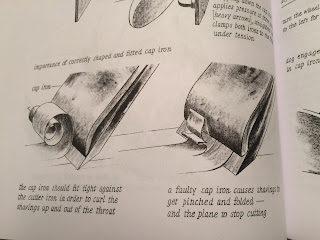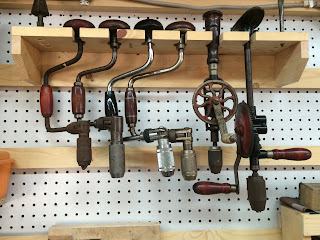HAND TOOLS
THEIR WAYS AND WORKINGS
Aldren A. Watson
First Edition 1982, Paperback 2002 reviewed
W.W. Norton & Company, Inc.
ISBN: 0393322769
At first glance this book is quite unassuming with its beige color and a seemingly simple illustration of a block plane on the cover. Let me say, this is just a front and does an excellent job hiding the huge amount of quality content throughout. Mr. Watson brings every ounce of his artistic talent to the artwork in this book, it’s of a quality I haven’t seen in a very long time. He was a prolific sketch artist during his lifetime and in this case coupled that talent with his love of all things woodworking.
Looking at the table of contents you can immediately tell it covers nearly every hand tool you will run across in any shop from the humble hammer to complex combination planes. Some of the chapters, such as those that discuss hammers, mallets, screwdrivers and pliers are naturally small but in several cases I learned something that I didn’t previously know. An example of this is a mallet made by wrapping hide in a circle then attaching a handle to it. I have seen these before but his exploded view allowed me to envision how it’s made.
Other chapters, such as that on saws, have illustrations that lend themselves to creating that “light bulb” moment for people. It can be difficult to explain the difference between a rip and a crosscut saw tooth and this is where his picture is literally worth a thousand words. Another chapter like this is the one on hand planes, the picture that shows what an improperly tuned chipbreaker does is perhaps the best I have seen. Throughout the book he doesn’t just tell you how to tune or use a tool, he shows you how problems manifest in the real world. In this case traditional pencil sketching trumps modern digital photographs.
The last part of the book has several sets of plans, one of which is for a folding closet workbench which I would guess several people in apartments could take advantage of. The tool plans include ones for a bench hook, shooting board, hold downs, a mallet and my personal favorite, full size saw handle templates.
Given that this book was first published in 1982 I partially expected it to be outdated as to the tools it dealt with. That’s the furthest thing from the truth, every tool in there is something we buy and use today. Not only is that a testament to the author choosing wisely but it’s a testament to the longevity of these tools.
This book has been on my woodworking wishlist on Amazon for quite some time, and I must say, I wish I had purchased it years ago. Had I done so many of the questions that I searched and searched and searched for would have been answered in a jiffy. As an example: what the number on auger bits means. Today I know that it’s the size in 16ths but years ago (before the Internet) that took forever to find out.
For those of you that have been using these tools for years there is the risk that you will know 90% of what’s in this book. For you I say this, isn’t that 10% worth it? And even if you don’t get a ton out of it the artwork alone allows this book to sit on the coffee table for nearly any audience to read.
For those of you that are new to unplugged woodworking & hand tools, this should be the next book you buy. For anyone new getting into unplugged woodworking this should be book #1 in their collection.
So, do I recommend it? Absolutely yes. Many pictures below.






























































